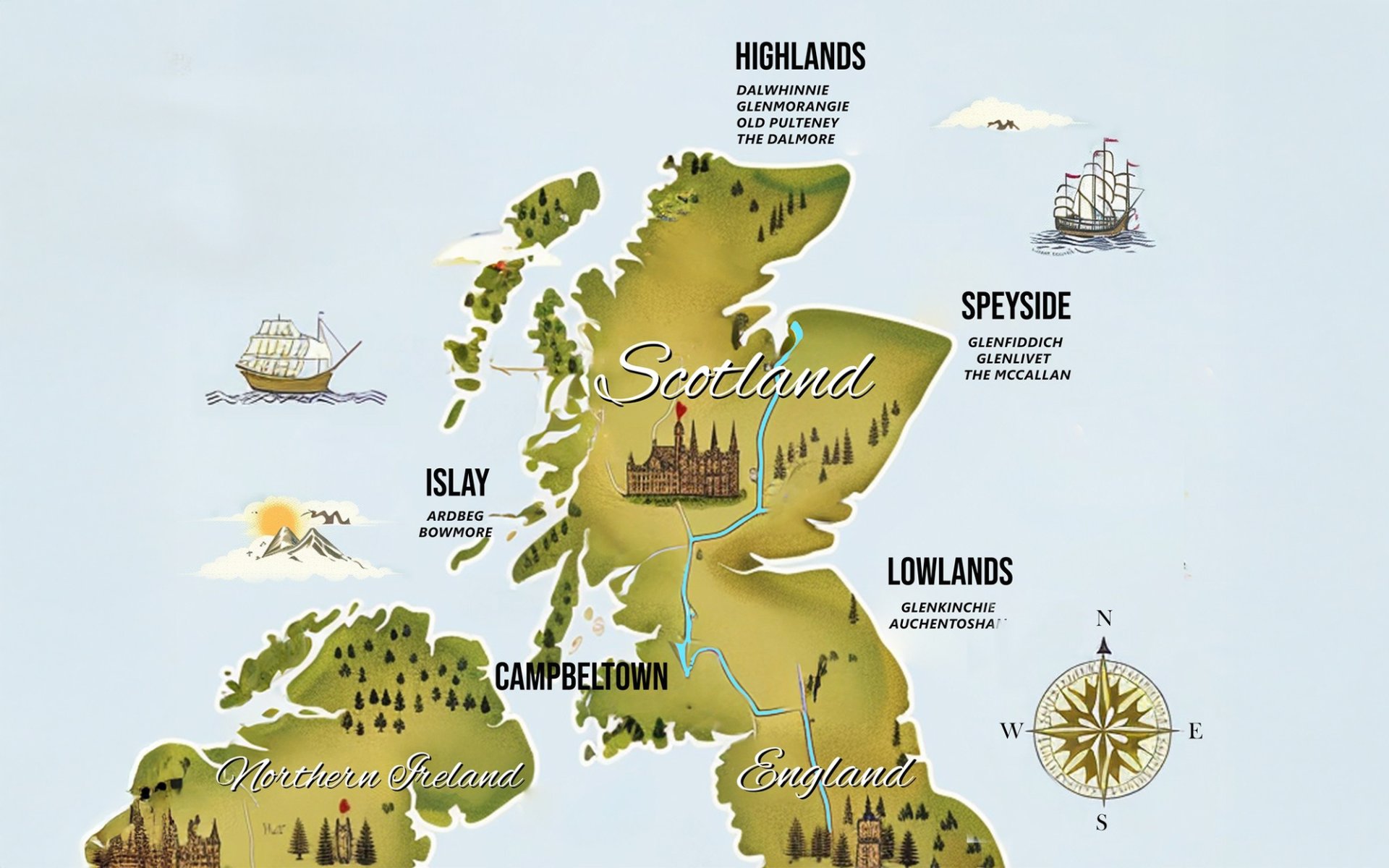Scotch Whisky

When it comes to world-renowned spirits, Scotch Whisky is certainly a familiar name. Produced primarily from barley through meticulous processes, it boasts a smooth, complex, and unique flavor distinct from other types of whisky. Today, Rimping Supermarket invites you to delve into the rich history of this "water of life" from the land of Scotland.
The Genesis of the Water of Life (Aqua Vitae)
The exact origin of Scotch Whisky remains somewhat obscure, but it is widely believed that the art of whisky production in Scotland was spread by Christian missionary monks around the 15th century. The oldest documented evidence dates back to 1494, recording that Friar John Cor of Lindores Abbey was commissioned by the King to produce Acqua Vitae, Latin for water of life, which is indeed whisky.
Initially, whisky in Scotland was primarily produced in monasteries for medicinal purposes. However, it quickly became a popular beverage among the general populace.
The Era of Illicit Production and Taxation
During the 17th century, whisky production in Scotland rapidly increased, but most of it was produced in remote glens of the Highlands. This was largely due to people trying to evade high taxes imposed by the monarchy. Consequently, the Highlands became home to numerous illicit distilleries, where locals secretly honed their whisky-making skills. However, these early whiskies were often unaged, resulting in a rather potent flavor.
Legal Reform and Distillation Innovations
The 19th century marked a significant turning point in Scotch Whisky production with the implementation of the New Excise Act in 1823. This act reduced taxes to encourage legal whisky production, leading to the proliferation of distilleries across Scotland, not just in the Highlands, but throughout the entire country.
Concurrently, Robert Stein, a Scottish distiller, invented the Continuous Still (or Column Still). This innovation produced a lighter and more consistent whisky compared to traditional pot still distillation. Later, this still was further refined by Aeneas Coffey, enabling even larger volumes of whisky to be produced with maintained consistency and good flavor.
The Advent of Blended Whisky and Rising Popularity
In the early 19th century, pioneering Scottish whisky blenders like Andrew Usher, John Walker, and James Chivas introduced the technique of Blended Whisky (which combines various whiskies). They began blending Single Malt Whisky (whisky made exclusively from malted barley at a single distillery) with Grain Whisky (whisky made from other grains besides malted barley) to produce smoother and more accessible whiskies.
Towards the late 19th century, the Phylloxera epidemic devastated vineyards in France, broadly impacting the French wine and brandy industries. This led to a significant surge in whisky's popularity, with Scotch Whisky also gaining considerable traction, becoming a vital alternative alcoholic beverage.
The 5 Key Scotch Whisky Regions: Distinct Identities
Currently, Scotch Whisky is produced in five main regions:
- Highlands: Located in the north of Scotland, key distilleries include Dalwhinnie, Glenmorangie, Old Pulteney, and The Dalmore. Whiskies from this region are known for their diverse flavors, often featuring notes of malt, dried fruit, spices, honey, and a delicate smokiness.
- Speyside: This region is traversed by the River Spey, which is crucial for its whisky production. Rich in various minerals, the river contributes to the region's reputation for smooth and excellent-tasting whiskies. Speyside boasts the highest concentration of distilleries in Scotland, including famous names like Glenfiddich, Glenlivet, and The Macallan. Whiskies from this area often exhibit characteristics of green apples, pears, dried fruits like raisins, and spices.
- Lowlands: Situated in the south of Scotland, bordering England, this region typically produces the softest and lightest whiskies. They are easy to drink, without overwhelming flavors, and offer subtle floral aromas. Notable distilleries in this region include Glenkinchie and Auchentoshan.
- Islay: An island located off the west coast of Scotland, its whiskies are renowned for their robust and intense flavors, featuring the distinct aroma of peat (a type of coal formed from compacted decaying vegetation in moorlands). They also have notes of sea salt and subtle seaweed, making them suitable for drinking on the rocks or as cocktail ingredients. Important distilleries include Ardbeg and Bowmore.
- Campbeltown: This region has the fewest active distilleries due to its whiskies often being intensely flavored and pungent, which historically limited their popularity. While this region once had over 30 operational distilleries in the 1800s, today only three remain active.
Each region of Scotland beautifully and distinctly expresses its local identity through its "water of life" or whisky. This distinctiveness is so profound that calling whisky from Scotland simply "Scotch" is universally understood, without the need for the word "whisky" to follow, signifying it is a whisky produced in Scotland.
However, it is important to consume whisky and other alcoholic beverages responsibly, in moderation, and to prioritize your safety and that of others by never driving under the influence.


